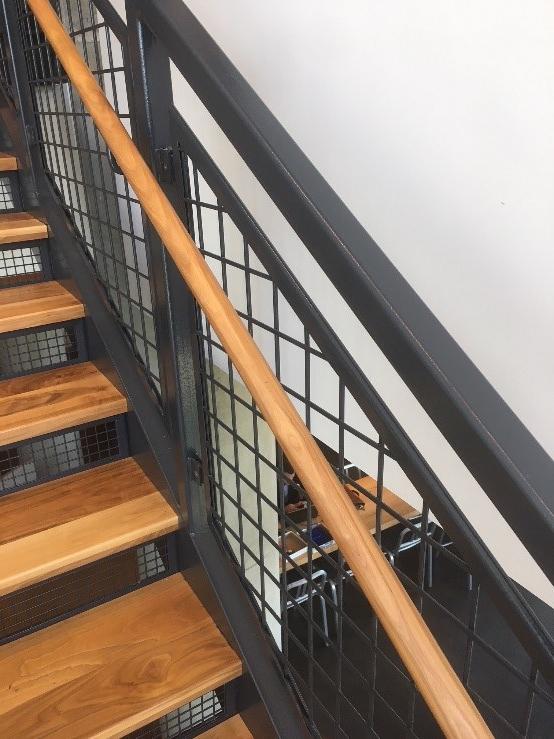
These two terms sound alike, but most building codes distinguish between the two. So what is the difference?
Handrail
A handrail is a railing used for support. Handrails are present while going down a flight of stairs or a ramp, as well as in other locations requiring navigation. They provide support for people who might be disabled or have trouble walking, or for people who prefer something to hold on to when navigating stairs or slopes.
If you have a stairway of more than three risers, you’re going to need a handrail.
To comply with the Americans with Disabilities Act (ADA), handrails must provide a continuous smooth, graspable surface. (There are many more ADA specifications for handrail. See this blog post for an overview).

Staircase between walls with an aluminum handrail.
Guardrail
In building terms, a guardrail is a railing used to prevent falling from an elevated surface like a deck or balcony. Unlike a handrail, a guardrail is a life-saving device. Guardrails come in a variety of styles, but all are designed for safety.
When guardrail lines a stairway (or a ramp with a rise of greater than 6 inches), building codes will require a secondary handrail, too.
Guardrails are subjected to code compliance testing, including concentrated load tests and deflection testing, to make sure they’re able to withstand the force of someone or something pushing or falling against them.

Staircase with both guardrail (metal gray) and handrail (wood).
The combination of secure, well-made guardrail and handrail paired together provides safety for those using them.
